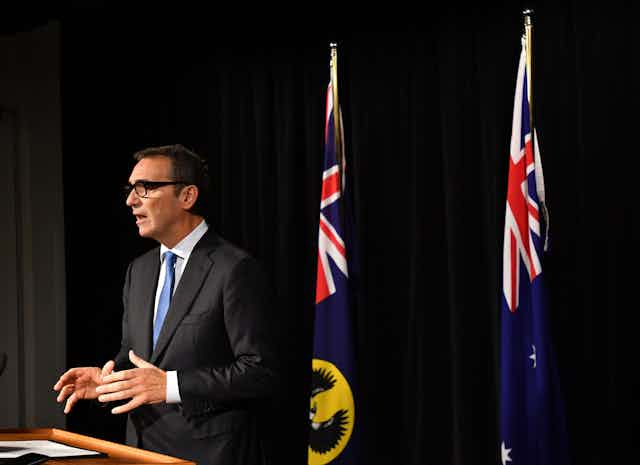Former prime minister Paul Keating used to say that when you change the government, you change the country. On Saturday South Australians changed their government, and now the country’s energy policy could finally change – and for the better, if current policy uncertainty is put to bed.
Prime Minister Malcolm Turnbull certainly seems to think it will. He is already claiming the SA election result as an endorsement of his National Energy Guarantee.
Read more: How the National Energy Guarantee could work better than a clean energy target
Incoming Liberal Premier Steven Marshall has consistently supported a national approach to energy policy, and on his first day in office he pledged to end South Australia’s go-it-alone approach.
But while South Australia’s support is vital, the National Energy Guarantee – which aims to reduce greenhouse gas emissions and ensure reliability in Australia’s National Electricity Market – is not a done deal yet.
Designing the guarantee
The independent Energy Security Board recommended a National Energy Guarantee last October, and the Turnbull government quickly adopted it as policy.
In November, at a meeting of the COAG Energy Council, New South Wales, Victoria and Tasmania voted for work on a detailed design of the guarantee. South Australia and the ACT voted against (Queensland was absent).
The weekend’s election result seems to have brought South Australia into the tent; it certainly draws a line under the tensions between the outgoing premier, Jay Weatherill, and Federal Energy Minister Josh Frydenberg, which bubbled over in a public stoush last year.
But the ACT government still has concerns about the guarantee, and all states will be holding out for more detail on the policy.
In February the ESB released a consultation paper on the design of the guarantee, which indicated that there is much work still to be done.
The design should not be rushed – getting the detail right is crucial if Australia is to tackle climate change and maintain a reliable electricity supply at lowest cost.
The guarantee is a means to an end, not the end itself. It is neither pro-coal nor pro-renewables. It is a mechanism to achieve national targets. The emissions target itself – a 26-28% cut in greenhouse gas emissions relative to 2005 levels by 2030 – remains a political choice of the federal government.
The design must be sufficiently robust to produce the desired outcomes, but should also be flexible enough to allow the emissions target and required level of reliability to change over time. People’s preferences change, new technologies are emerging, and current and future governments will almost certainly need to increase emissions targets under the Paris Agreement.
A design that is flexible in response to alternative political choices has a much better chance of getting unanimous support from the states and territories. A state or territory supporting the guarantee need not endorse the current target.
What next for renewables?
Weatherill famously declared South Australia’s election to be “a referendum on renewable energy”. His defeat almost certainly means that South Australia’s 50% renewable energy target, which Weatherill had pledged to extend to 75%, will be abolished.
But South Australia’s wind, solar and battery projects aren’t going anywhere. While there has been some concern about the future of individual projects, the change in policy won’t affect existing solar and wind farms. Marshall has promised to honour existing contracts. South Australia remains the location of choice for many projects under the federal Renewable Energy Target.
The National Energy Guarantee would not replace or preclude state targets for renewable energy. They achieve different things. A renewable energy target is aimed at guiding and shaping industry investment, rather than specifically reducing emissions (although states have used renewable energy targets in recent years to attempt to cut emissions in the absence of a credible federal scheme).
Read more: Will the National Energy Guarantee hit pause on renewables?
South Australia is likely to continue to contribute strongly to a national emissions reduction target, with or without a local renewable energy target. High levels of intermittent renewable energy in the state will require backup generation and demand response to meet the reliability obligation.
Under the guarantee, states and territories can still choose to deliver greater emissions reductions than the federal target. They can do this through renewable energy targets or more direct emissions policies. But individual states that want to pursue these deeper cuts could end up doing the heavy lifting for the nation, unless states can collectively agree to beat the national target.
Unanimous support still needed
The COAG Energy Council will meet again on April 20 to discuss the future of the National Energy Guarantee. With South Australia’s support looking much more likely this time around, the policy can be expected to remain on the table. But all states and territories will no doubt reserve judgement until they have the final design, and that won’t be until the second half of 2018.
Australia is edging closer to finally having a national, integrated, energy and climate policy. We’ve been here before, and previously have let the perfect become the enemy of the good. Let’s not make that mistake again – let’s get a foundation in place to build on. So many politicians have fallen trying. But perhaps Weatherill will be the last.

